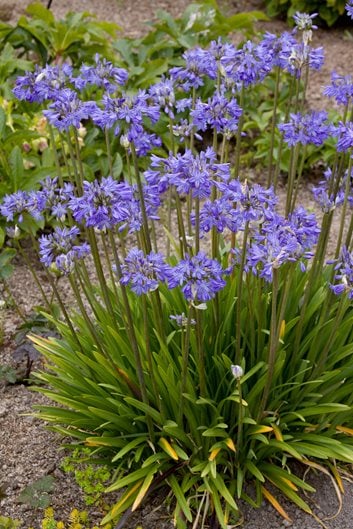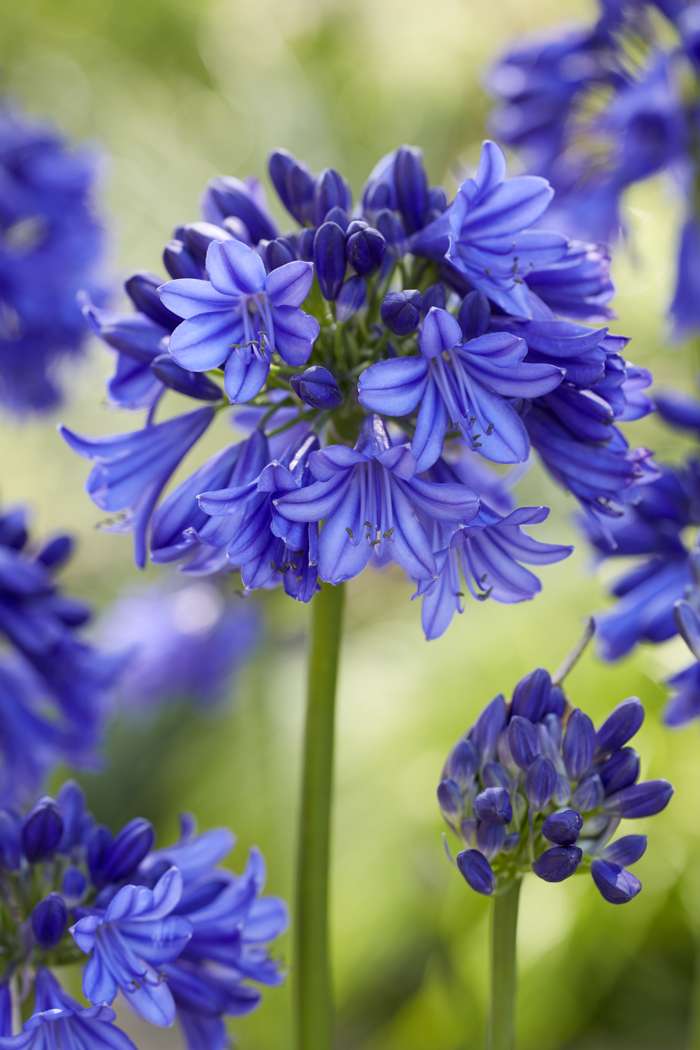Releasing the Secret to Successful Agapanthus Farming: Idea for a Flourishing Yard
In the realm of horticulture, growing agapanthus successfully requires a calculated approach that includes various elements of plant treatment. With mindful attention to detail, one can unlock the tricks to supporting these sensational blooms, leading to a garden that prospers with charm and vibrancy. By comprehending the subtleties of agapanthus farming, one can develop an environment where these plants flourish and grow abundantly. In the following discussion, we will certainly check out crucial tips and tricks that will certainly lead you towards a prospering agapanthus garden, offering insights right into finest methods, dirt problems, watering methods, and a lot more.
Planting Agapanthus: Best Practices
When growing Agapanthus, proper soil prep work is important for making certain successful development and growth of these beautiful flowers. Agapanthus, frequently called Lily of the Nile or African lily, thrives in well-draining dirt with a somewhat acidic to neutral pH degree - Agapanthus. Before planting, it is critical to modify hefty clay soils with organic matter such as compost or peat moss to improve drain and offer vital nutrients for the plants
To plant Agapanthus, pick a place that receives full sunshine to partial color, as this will advertise healthy and balanced development and plentiful flowering. Dig an opening two times the size of the plant's origin round and put the Agapanthus at the very same deepness it was formerly expanding. Delicately backfill the opening with dirt, weighing down securely to get rid of any type of air pockets around the roots.
Water the recently grown Agapanthus extensively and continue to maintain the dirt uniformly moist, particularly throughout the plant's active expanding season. Agapanthus. Applying a balanced plant food once a month can further support the plant's development and flowering. By adhering to these ideal techniques for growing Agapanthus, you can develop a stunning display screen of these fascinating blossoms in your yard
Suitable Soil Conditions for Agapanthus
For ideal development and growing success of Agapanthus plants, guaranteeing the soil problems are perfect is crucial. Agapanthus favors dirt that is abundant in nutrients, so incorporating a balanced plant food during the expanding season can promote healthy development and lively blossoms.

Watering and Fertilizing Tips
To make sure healthy development and dynamic flowers, appropriate watering and feeding methods are vital for effective Agapanthus farming. Agapanthus plants take advantage of routine watering, especially throughout the expanding season. It is advised to water deeply as soon as a week, making sure the soil is moist but not waterlogged. Throughout heat or in pots, even more regular watering may be necessary to protect against the dirt from drying out totally.
When it involves fertilizing Agapanthus, a balanced plant food with equal components nitrogen, phosphorus, and potassium can be applied in the spring to advertise healthy growth and flowering. Slow-release plant foods are suitable for giving nutrients gradually over an extended period. Prevent over-fertilizing, as this can cause extreme foliage growth at the cost of blossoms.
Additionally, integrating raw material like garden compost right into the soil find can improve nutrient degrees and improve dirt framework, aiding in the overall health and wellness of the Agapanthus plants. By adhering to these watering and feeding ideas, garden enthusiasts can ensure their Agapanthus plants thrive and generate magnificent displays of blossoms.
Trimming and Deadheading Methods
Correct pruning and deadheading techniques play an important role in keeping the health and wellness and looks of Agapanthus plants, complementing the essential techniques of watering and feeding for effective cultivation. Pruning Agapanthus involves getting rid of invested blossom heads, dead or yellowing fallen leaves, and total shaping of the plant to promote much better growth. Deadheading, the procedure of removing faded flowers, not only click here now boosts the plant's look yet likewise encourages more flowering.
When deadheading Agapanthus, it is advisable to snip off the blossom stem at the base making use of sharp, tidy shears. This process redirects the plant's power from seed production back right into root and vegetation growth, promoting a much healthier and much more robust plant. Normal deadheading can expand the growing period of Agapanthus and stop self-seeding, which can cause overcrowding.
In regards to pruning, Agapanthus typically benefits from a light trim after blossoming to tidy up the plant and encourage fresh development. Cutting down the spent blossom stems and eliminating any broken or dead vegetation helps preserve the plant's vitality and general appearance. Nevertheless, it is vital to stay clear of cutting right into the crown of the plant, as this can damage its wellness.

Protecting Agapanthus From Vermins and Diseases
Executing efficient pest and disease administration strategies is critical to guarding the wellness and vigor of Agapanthus plants in growing. Agapanthus are usually sturdy plants, yet they can still succumb to different pests and diseases otherwise effectively taken care of. One usual parasite that influences Agapanthus is the Agapanthus borer, a caterpillar that passages into the plant, causing damage to the blossoms and fallen leaves. To stop problems, routine assessment of the plants is important. If borers are spotted, they can be manually gotten rid of, or insecticidal soap can be made use of as a control procedure.
In enhancement to bugs, Agapanthus are vulnerable to conditions such as root rot and fungal fallen leave areas. By staying vigilant and dealing with bug and disease concerns quickly, gardeners can assist their Agapanthus flourish and grow.

Conclusion
Finally, successful growing of agapanthus needs appropriate growing techniques, optimal soil conditions, ample watering and feeding, regular trimming and deadheading, and protection from diseases and parasites. By adhering to these ideas and tricks, garden enthusiasts can make certain a flourishing garden filled with attractive agapanthus flowers. Agapanthus. Bear in mind to keep consistent treatment and interest to detail to advertise the wellness and longevity of these stunning plants
When growing Agapanthus, correct soil preparation is important for making sure successful development and growth of these attractive flowers.Water the recently planted Agapanthus thoroughly and continue to keep the soil evenly wet, particularly throughout the plant's see this active growing season.For optimal growth and blooming success of Agapanthus plants, making sure the dirt conditions are perfect is essential. When hair transplanting or growing Agapanthus, ensure the dirt is well-prepared to supply the needed structure for the plants to develop themselves successfully. One common parasite that impacts Agapanthus is the Agapanthus borer, a caterpillar that tunnels into the plant, causing damages to the fallen leaves and flowers.
Comments on “Agapanthus Buddy Plant Kingdoms: Perfect Pairings for Your Garden”